
First and Only Weekly Online Fanzine Devoted to the Life & Works of Edgar Rice Burroughs
Since 1996 ~ Over 15,000 Web Pages in Archive
presents
Volume 3121
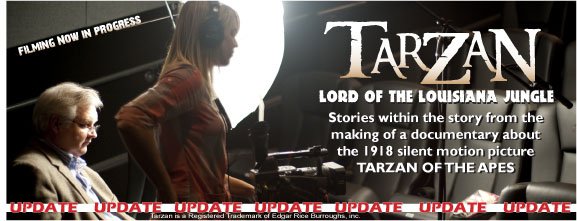



Black Manhood and the Silent ScreenA large part of my job on this project has to do with research. It is not enough to understand what happened back in 1917 and 1918 but why it happened and what, if any, impact did it have on the making of the film or the audience who saw it. The African American component to the "Tarzan of the Apes" film is an area of particular interest to me.
Recently a friend of mine told me that as an African American he had never personally experienced any ill-treatment at any public business in his life. When I interviewed the older African Americans in Morgan City, Louisiana, they testified that their grandchildren thought that they were fibbing about their tales of hardship. I am not saying that prejudice has vanished. It hasn't, but we cannot achieve context by judging yesterday by the apparent progress that has been made.
To tell my story I had to find out what was happening in the early 20th century. For example, in 1917 and then again in 1918 there were about 60 black people lynched. Based on today's culture, these acts are virtually non-existent at this time.
I researched and found a number of African American history professors here in Louisiana but not one knew anything about the early Tarzan film or would venture an opinion about that time period for African Americans. While not a completely trustworthy source, I began reading articles on the internet. This led me to various on-line book outlets. Thankfully some allowed a peek inside the content of the books they offered.
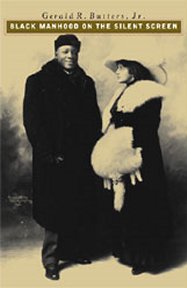
This is a wonderful book by Gerald Butters, Jr.One book that stood out from the rest was Black Manhood on the Silent Screen by Gerald Butters, Jr. In looking through the contents on-line I found that it dealt with the Tarzan film, the plight of African Americans from the Reconstruction through 1920 and the role of cinema in the Black culture. It is an excellent read and a tremendous source for gaining perspective. While academic there isn't a dry word in the book. This opening quote sets the stage:
“In 1896 two events dramatically affected the role and place of the African American in American society: first, the Supreme Court decision in Plessy v. Ferguson and, the second, the first public screening and popularization of the motion picture. Both events projected the position of the African American as one of inferiority and degradation, and the constitutional decision-making relegated the African American to a position of judicial separation through legal segregation. African-American men were stripped of their legal rights and the new entertainment form of motion pictures portrayed them as subhuman.”Louisiana is pivotal in three dramatic events. First the Supreme Court decision in Plessy v. Ferguson was a case that started in Louisiana. Second the first "theater" in the U. S. dedicated exclusively to showing motion pictures was Vitascope Hall, established on Canal Street, New Orleans, LA on June 26, 1896. Finally, the first location feature film which was a major release was shot in Louisiana – Tarzan of the Apes.
– Jesse Algeron Rhines, Black Film/White Money (New Brunswick, N.J.: Rutgers University Press, 1996), 15. [Butters, Gerald R., Jr., Black Manhood on the Silent Screen (Lawrence, Kansas: University Press of Kansas, 2002), 1]I ordered Gerald’s book and have read and studied it several times. I contacted Gerald via email and he was willing to be interviewed on camera. I was excited about this interview but also that Gerald lived in Aurora, IL which was only about 350 miles from Dayton where the international gathering of Burroughs enthusiasts were holding their Dum-Dum convention. The timing triangle was complete for Allison and me to interview Gerald at the Aurora University, film the Burroughs collection, interview George McWhorter in Louisville, KY and gather interviews in Dayton, OH.
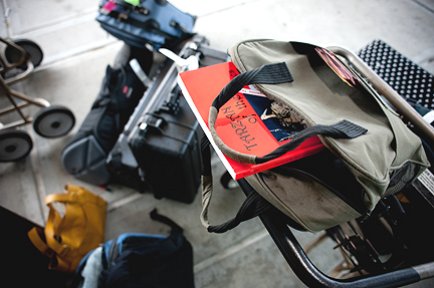
Our equipment made it off the plane with us,
along with our trusty Tarzan book by Dick Spargur.From reading Gerald's book I concluded that he must be African American. About a week or so before our scheduled interview at his university, I recorded a phone interview with him. I couldn’t tell from his voice what his color might be. I'm not great at catching dialect. I can't even hear the southern twang in my voice. The time worked out for both Gerald and I. The morning we met he was conducting his last class of the summer and was headed for vacation the next day. It was our only window of opportunity.
Allison and I stayed in the Hampton Inn in Aurora and met him the next morning. We arrived early and met Gerald walking up the stairs. He was as white as me. However, he had a wonderful smile and firm handshake. We went to his office for the interview.
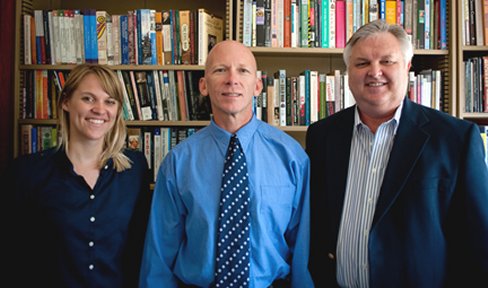
Allison, Gerald and myself in his office at the universityI had already studied his book and heavily marked it up. I sent him a series of questions and he was ready with wonderful answers that would have been every interviewer's dream. Needless to say, Gerald is a solid fixture in our film and book.
Gerald had watched the original Tarzan film again and was able to put it in context of that time period. He perfectly wove Birth of a Nation, blackface, the KKK, NAACP and the treatment of women into the cinema of the day.
I believe one of Gerald's greatest assets is that he truly focused on the history of that day without using the opportunity to articulate any personal agenda. I really admired this. I can't wait until Gerald sees the finished film and book.
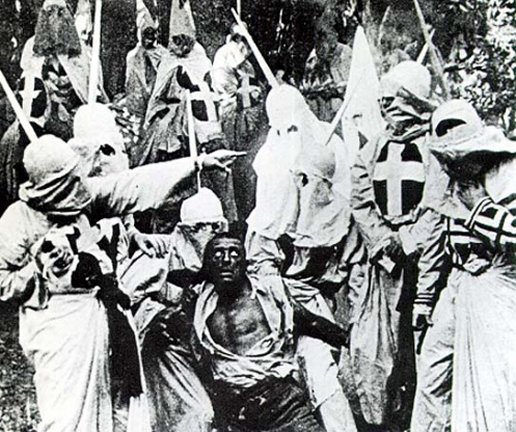
A still from the movie Birth of a Nation.
Gerald's interview dealt with the use of blackface in the early silent films.
Elmo Lincoln played several different blackface characters in the movie.The next installment: The View From Above
![]()

![]()
BILL
HILLMAN
Visit
our thousands of other sites at:
BILL
and SUE-ON HILLMAN ECLECTIC STUDIO
ERB
Text, ERB Images and Tarzan® are ©Edgar Rice Burroughs, Inc.-
All Rights Reserved.
All
Original Work ©1996-2010/2018 by Bill Hillman and/or Contributing
Authors/Owners
No
part of this web site may be reproduced without permission from the respective
owners.